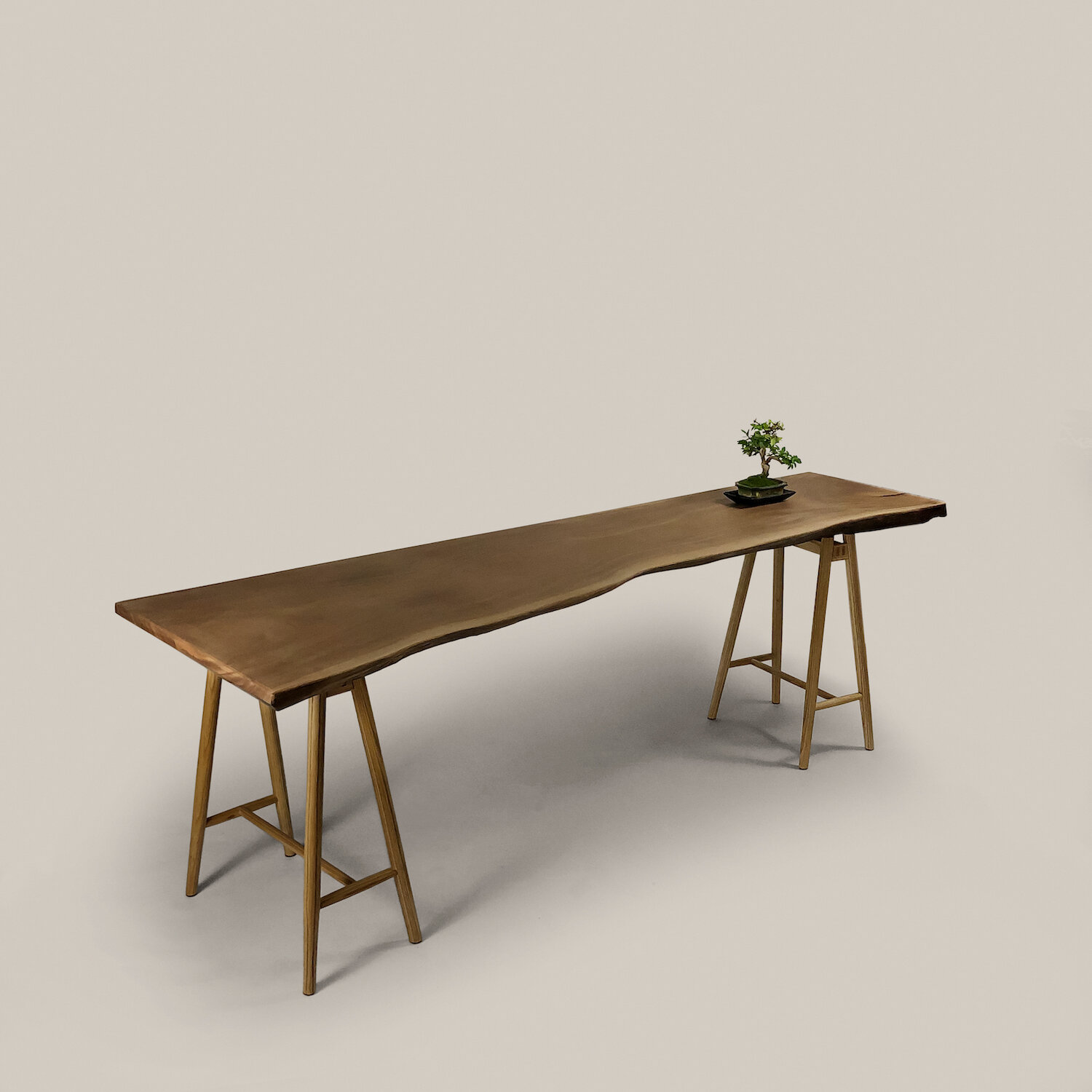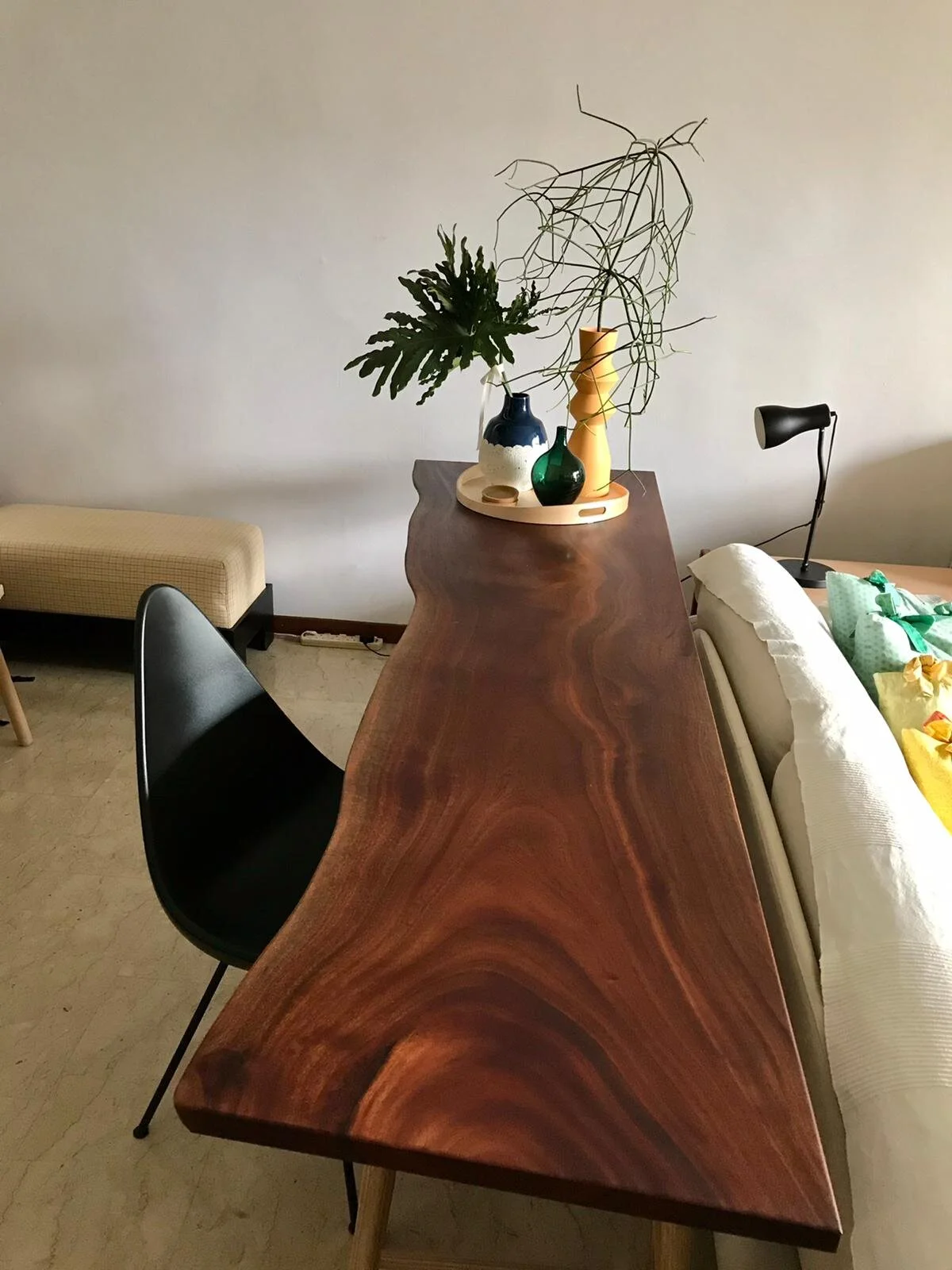Kirei Table
What is beauty? In my opinion, nature is beautiful. Nature delivers the most beautiful lines with perfect balance everytime. To capture the beauty of nature is a privilege that carpenters have, and it is not a privilege that we take for granted. To work with nature is an honor and to work against nature is a sacrilege.
The customer had a hand in naming this piece. I thought she would be the best person to name it since she's the new owner of the table and because we always prioritise the customer’s needs in mind. This is what she said:
Kirei is the Japanese word for beauty. Kirei can be used as an expression - beautiful, and the meaning of kireina is deeper based on the context. In this case, pleasing the senses of mind aesthetically. Was thinking should I think of the slab, khaya tree - or the specially crafted legs, but in my mind all aspects of the table is so beautiful from the natural wood grains to the fine workmanship. It’s work of nature vs art, so I decided a single word - “beautiful” would encapsulate this piece of work.
And how aptly she put it.
This is an African mahogany slab with trestle legs in white ash. The slab is approximately 2.3 meters in length, with a thickness of 60mm and depth ranging from 70cm to 90cm. This is a natural slab from a local tree was that was cut down along Upper Bukit Timah Road (Singapore) for road widening. The slab had been drying in the sawmill for 1 year before we acquired it and then for an additional 3 years in our storage. To get it to its current form, it had to be thinned down from 100mm to the current 60mm. As this is was to be positioned at the back of a sofa or against a wall, the collective decision was taken to flatten one side of the live edge. We kept the edge that was curved inwards, much like an embrace to the user. The inward curve, like a pair of open arms, invites the user into its realm.
I really enjoy the collaborative process of designing furniture with the customer. For the table base, we went through a few rounds of to-and-fro, throwing ideas around and (eventually) what remained was vey congruent with the customer’s aesthetic and our philosophy. Clean, natural, sleek and simple was what we were looking for and we’re quite pleased with how it turned out. Did you notice that the two trestles are not the same width? The slab is not regularly shaped - the left end is deeper than the right. To maintain the balance between slab top and base width on both ends of the table, we opted to size the trestles differently. The left trestle is slightly wider than the right trestle.
White ash with very straight grain was chosen for the trestles. The trestles are made with traditional round mortise and tenon joinery. I took a course earlier this year to dive deeper into round mortise-and-tenon joinery and applied what I learnt to this project. The mortise is cut before the tenon and the tenon is slowly shaven to reduce its size to fit the mortise. The tenon is also kept in a kiln to super-dry it, and only taken out just when it is time to size the tenon to the mortise. This knowledge of manipulating moisture content in wood is really quite ingenious. Because the moisture content of the tenon is low, it has a slightly reduced size. When fitted snugly into the mortise (that has a slightly higher moisture content than the tenon), the tenon would eventually size up a tiny bit vis-a-vis the mortise size as they both try to equalise to the relative humidity in the air around them. What this gives us as woodworkers is a fantastic mechanical joint, where the tenon is fit snugly into a mortise AND then the tenon expands slightly to further hold itself in the joint. This makes for excellent joinery and contributes to the longevity of the furniture as it does not really depend on the chemical strength of glue to hold the joint together. I can draw a parallel to the Japanese method of kigoroshi, where the fibers of wood are slightly compressed prior to assembling the joint and then slowly puffing up upon reabsorbing moisture from the air to further strengthen wood to wood contact inside the joint.
Finally, the parts making the trestle are shaven to a fine finish (kanna-shiage). Kanna-shiage is a finish that is achieved by taking a plane to shave the wood so thinly that the resulting surface is glossy. This is seen by the eye as many facets on the round surface of the wooden posts that make up the trestle, much like how a diamond is shaped. This also has the benefit of achieving the patina of use in a shorter time than other methods of finishing. While a more commonly used method of finishing wood is to use sandpaper, we avoid using sandpaper at Mokko Wood Studio as it is inferior compared to the kanna-shiage. Finishing by plane means that the wood will look clearer.
We are very pleased to present Kirei as one of the proudest work we have done at Mokko Wood Studio in 2020.
Alvan Koh , December 2020
The final planing of Kirei’s leg posts using a spokeshave.
The African mahogany slab getting a trim to its flat edge on one side.











